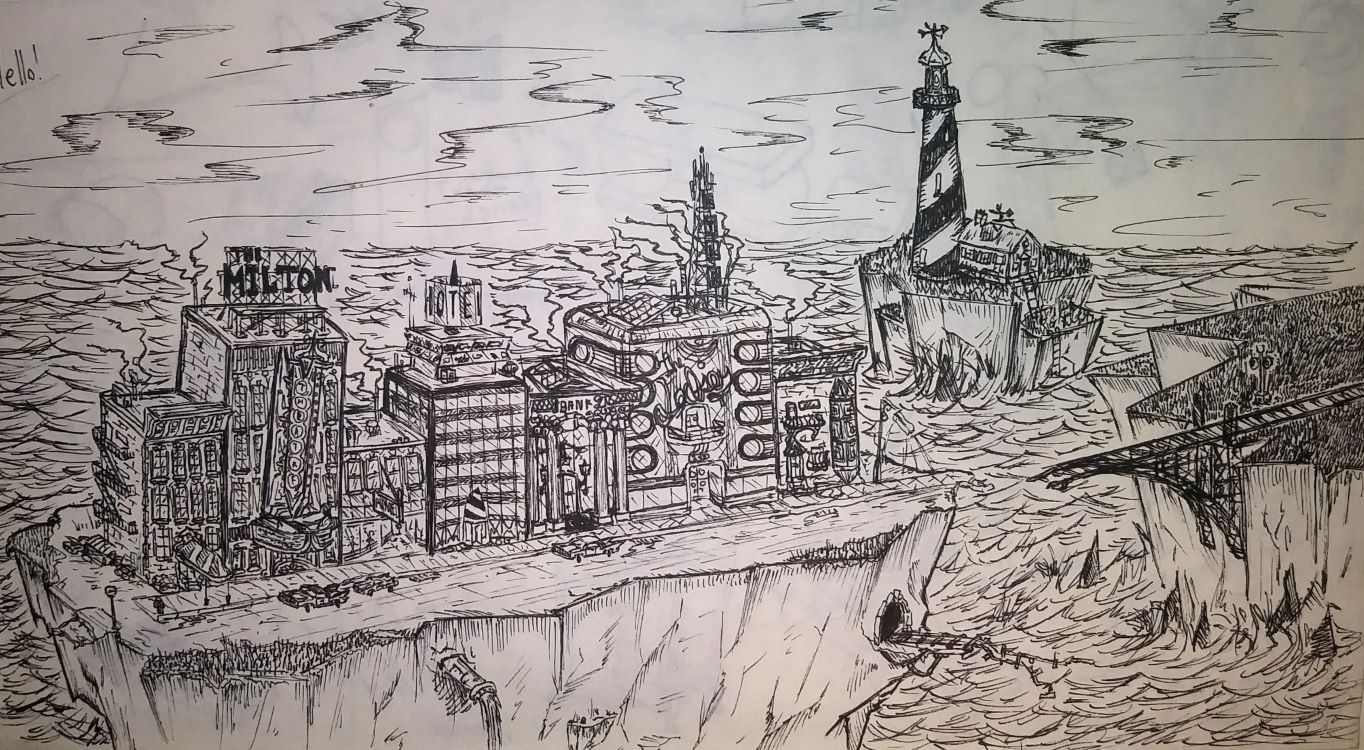In their artworks, Abby and Rebecca Kelleher use feminine figures to comment on the destruction of nature. Abby’s artwork features “Demeter, the goddess of harvest,” who “represents all that comes with the beauty of nature and how it sustains life.” Looming in the background, “we see smoke and factories that are destroying all the field crops and harvest that she has flourished.” Kelleher's artwork also conveys a sense of impending desctruction, showing how "time is running out and Mother Nature is beginning to crumble. Soon there will be nothing but dust if we do not change and adapt.” Similarly, Gianna Green’s poem expresses the need to make change soon in order to save our home:
Some people say the time is now
Truth is, the time to make change
Has always been
For time is running out
To fix the home
Below, additional artworks and poems address the current destruction of nature and the urgency of making changes before it is too late.
Aidan Breakie’s detailed drawing depicts a cityscape where human life appears to continue normally even as “a rising tide isolates a community from the land.” Climate change destroys nature as well as man-made structures like pipes and railroads, which dangle feebly from cliffs. An anonymous poem also addresses this tension between the power of nature and the power of industry:
Oh, how far man has come
Bridges after bridges
Tunnels through the steepest hills
Miles taken, oceans swum.
Stopped the greatest rivers
Cut down the tallest trees
Whatever mother nature delivers
Kill it as if it’s a disease
Ella and Carly Grzeskiewicz use their artworks to address specific issues that contribute to climate change. Ella says, ”I drew a combination of many different climate change logos to represent the "death" of our planet due to the uprising in oil usage, industrial use, destruction to our habitats, and inability to recycle.” Grzeskiewicz critiques the profit that companies make from destructive practices like fracking, explaining that “the earth is being cracked open by a fracking pump, exposing the core of earth which is filled with money…the money also begins to burn with the earth, because without the preservation of the environment any money made from fracking is ultimately useless.”
A poem by Xavier Tavares, “Control,” addresses the frustration of knowing that the ability to combat climate change is in the hands of those with power.
Commonfolk were blamed for the environmental problems we now face
“Of course you can do something, just bike to work and recycle waste.”
Naive it was to believe those lies.
Tavares goes on to note that “we must vote for someone who cares and is willing to make changes with haste,” acknowledging that individuals cannot combat climate change alone and that large-scale solutions are needed.
“Growth” by Ava Malkin “is a depiction of the fight for nature against the cruel dominance of innovation.” Malkin writes, “global warming is causing a major decline in the environment; I wanted to show this by placing a dainty flower in the harsh climate of factory life.”
In her haiku, “Resurrection,” Ashley addresses a similar theme, noting, “there is destruction all around us, yet nature persists and there is still hope for the planet if we become more aware and take action now.” She writes:
cutting, burning down
the man-made world on fire yet,
a sapling grows strong.
Hope, Holly Talbot, and Jacqueline Rima use their artworks to address the destructiveness of humans. In “Strike the Set,” Hope plays on a phrase used in theater when a set is taken down at the end of a production, pointing to the seemingly inevitable annihilation of nature by humans. Talbot's and Rima’s drawings of body parts also mourn the impact of humans on the environment. In Talbot’s artwork, “the human eye watches the earth and sees the pain it is going through as humans create detrimental environmental impacts.” In Rima’s drawing, inspired by a Thomas LeRoy sculpture, she represents how “we try to fix issues we’ve caused and it leads to even more problems.”










